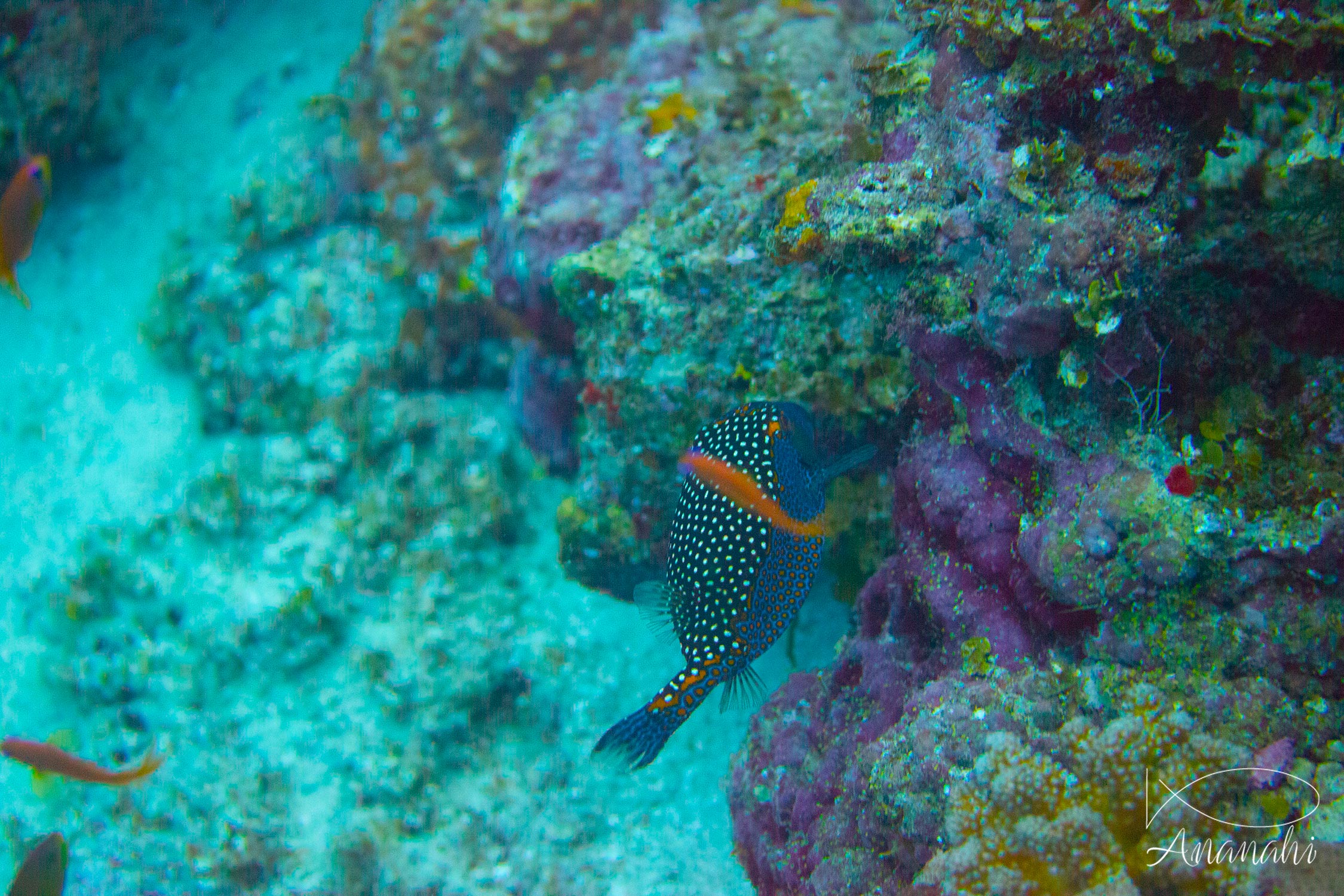
Scientific name: Ostracion meleagris
Size: Up to 7.9 inches
Color: Males: blue, yellow, white. Females and juveniles: black, white
Distinguishing feature: Blue body with yellow spots circled in black. The upper body is yellow but blackened and filled with white spots. Females and juveniles are all black with white spots.
Where did we see it: Bali and Gili, Zanzibar, French polynesia, Mayotte, Maldives

Scientific name: Ostracion meleagris
Size: Up to 7.9 inches
Color: Males: blue, yellow, white. Females and juveniles: black, white
Distinguishing feature: Blue body with yellow spots circled in black. The upper body is yellow but blackened and filled with white spots. Females and juveniles are all black with white spots.
Where did we see it: Bali and Gili, Zanzibar, French polynesia, Mayotte, Maldives
This species is not shy and an individual can just stop to watch you. However females are less adventurous than males, and therefore rarer to observe.
In case of stress, his body produces toxic secretions that make it a dangerous target. This substance spreads in the near water when it's secreted, which allows it (besides the solidity of its body) to have only few predators.
The kakihona sushi (sushi wrapped in persimmon leaves) are really the best!
To eat them, you have to go to Nara!
The whale shark is the largest fish in the world!
Some whales are larger, but they are mammals, not fish!
We can hear the bull shark is very dangerous because of attacks near La Réunion island.
However, tens of them are living at 600 feet from the famous beach of Playa Del Carmen in Mexico. And there are no attacks.